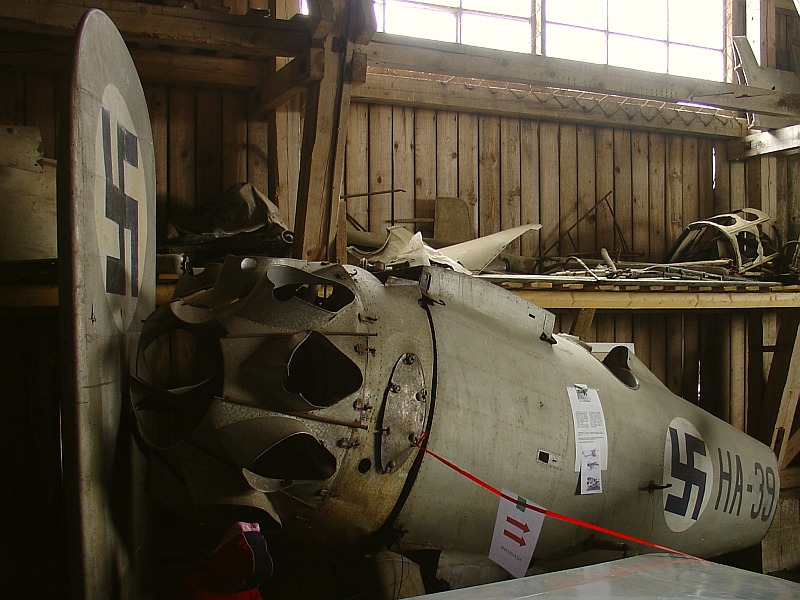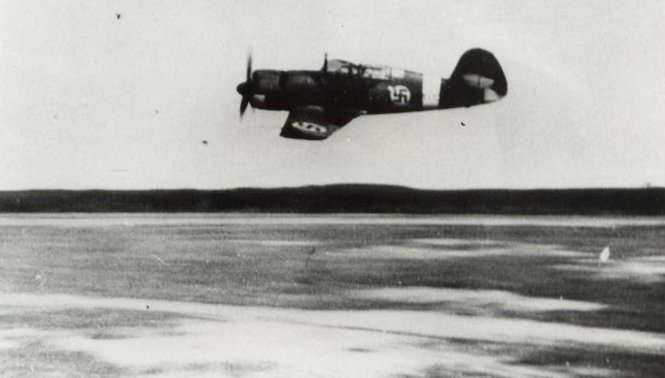|
Torsti Verkkola
Torsti Rafael Verkkola (May 22, 1909 Lahti – June 11, 1977) was a Finnish aircraft designer, researcher and professor. Born to train driver Karl Wennström and Matilda Vilen in Lahti, he changed his surname from the Swedish ''Wennström'' to the Finnish ''Verkkola'' in 1935. He married Impi Inkeri Niinivaara in 1939 and together they had two children, Matti and Marja. He graduated from college in 1928, and received his diplomi-insinööri (MSc) degree in 1935. He studied at ''Technische Hochschule Berlin'' between 1935–1937 and did several study trips to Europe and North America. He worked for Valtion lentokonetehdas (VL) from 1935 to 1945. He was chief designer from 1937–1941, later serving in administrative roles until 1944. During his time at VL, he participated in the design of VL Myrsky, VL Pyörremyrsky, and VL Pyry. He held the military grade of Captain of Engineering. In 1945, he was appointed a professorship in mechanical engineering at the Helsinki Polytechnics H ... [...More Info...] [...Related Items...] OR: [Wikipedia] [Google] [Baidu] |
Lahti
Lahti (; sv, Lahtis) is a city and municipality in Finland. It is the capital of the region of Päijänne Tavastia (Päijät-Häme) and its growing region is one of the main economic hubs of Finland. Lahti is situated on a bay at the southern end of lake Vesijärvi about north-east of the capital city Helsinki, south-west of the Heinola town and east of Hämeenlinna, the capital of the region of Tavastia Proper (Kanta-Häme). It is also situated at the intersection of Highway 4 (between Helsinki and Jyväskylä) and Highway 12 (between Tampere and Kouvola), which are the most significant main roads of Lahti. In English, the Finnish word Lahti literally means ''bay''. Lahti is also dubbed the "Chicago of Finland" due to the early industries of both cities, when they were known as " slaughterhouse cities".Lahti on Suomen Chi ... [...More Info...] [...Related Items...] OR: [Wikipedia] [Google] [Baidu] |
Finland
Finland ( fi, Suomi ; sv, Finland ), officially the Republic of Finland (; ), is a Nordic country in Northern Europe. It shares land borders with Sweden to the northwest, Norway to the north, and Russia to the east, with the Gulf of Bothnia to the west and the Gulf of Finland across Estonia to the south. Finland covers an area of with a population of 5.6 million. Helsinki is the capital and largest city, forming a larger metropolitan area with the neighbouring cities of Espoo, Kauniainen, and Vantaa. The vast majority of the population are ethnic Finns. Finnish, alongside Swedish, are the official languages. Swedish is the native language of 5.2% of the population. Finland's climate varies from humid continental in the south to the boreal in the north. The land cover is primarily a boreal forest biome, with more than 180,000 recorded lakes. Finland was first inhabited around 9000 BC after the Last Glacial Period. The Stone Age introduced several differ ... [...More Info...] [...Related Items...] OR: [Wikipedia] [Google] [Baidu] |
Diplomi-insinööri
Diplomi-insinööri (DI) ( sv, diplomingenjör) is a Finnish Master's level academic degree with a nominal length of 300 ECTS credits. The official English translation of the degree is Master of Science (Technology). The Finnish name derives from the old German degree called ''Diplom-Ingenieur''. The degree qualifies for the ''tekniikan lisensiaatti'' (Licenciate of Science (Technology)) and the ''tekniikan tohtori'' (Doctor of Science (Technology)) degrees. It is preceded directly by ''tekniikan kandidaatti'' (Bachelor of Science in Technology), and with some additional study, by other Bachelor's level degrees. It is a taught master's degree, but includes a half-year project (''diplomityö'', ''Master's thesis''). The ''diplomi-insinööri'' degree is granted by eight Finnish universities in a variety of degree programs. The common feature of the programs is the engineering approach based on scientific and mathematical studies. Usually, graduates with the degree work as experts ... [...More Info...] [...Related Items...] OR: [Wikipedia] [Google] [Baidu] |
Technische Hochschule Berlin
The Technical University of Berlin (official name both in English and german: link=no, Technische Universität Berlin, also known as TU Berlin and Berlin Institute of Technology) is a public research university located in Berlin, Germany. It was the first German university to adopt the name "Technische Universität" (Technical University). The university alumni and professor list includes several US National Academies members, two National Medal of Science laureates and ten Nobel Prize laureates. TU Berlin is a member of TU9, an incorporated society of the largest and most notable German institutes of technology and of the Top International Managers in Engineering network, which allows for student exchanges between leading engineering schools. It belongs to the Conference of European Schools for Advanced Engineering Education and Research. The TU Berlin is home of two innovation centers designated by the European Institute of Innovation and Technology. The university is labele ... [...More Info...] [...Related Items...] OR: [Wikipedia] [Google] [Baidu] |
Valtion Lentokonetehdas
''Valtion lentokonetehdas'' (State aircraft factory) was a Finnish aircraft manufacturing company that was founded on 23 February 1928 from the IVL or I.V.L. factory (Ilmailuvoimien lentokonetehdas, Finnish Air Force Aircraft Factory), founded in 1921. The company was transferred from being subordinate to the Finnish Air Force to being subordinate to the Ministry of Defence. The company, and its products were named with the prefix VL. Island factory The company began its production at Suomenlinna and Santahamina in Helsinki. The factory did not have an airport, only the sea and sea ice could be used for take-off and landing. Most of the aircraft built in Helsinki were seaplanes. In Helsinki the aircraft built were small compared to the Bristol Blenheim bombers built under licence in the late 1930s. Much of the final assembly was done outdoors. The company was looking for a new production facility further away from the Soviet Union. Helsinki was seen as a bad location for an arm ... [...More Info...] [...Related Items...] OR: [Wikipedia] [Google] [Baidu] |
VL Myrsky
The VL Myrsky ("Storm") is a Finnish World War II fighter aircraft originally developed by Valtion lentokonetehdas for the Finnish Air Force. The models of the aircraft were Myrsky I, Myrsky II, and Myrsky III. It was designed by Edward Wegelius, Martti Vainio and Torsti Verkkola who worked at Valtion lentokonetehdas. Development The decision to start developing a new fighter for the Finnish Air Force was based on experience gained before the Winter War: in the "arms race" leading up to a war, smaller nations can have difficulty purchasing top-of-the-line fighters without a significant political cost. The Finnish Air Force requested preliminary proposals for a domestic fighter from State Aircraft Factory (Valtion Lentokonetehdas) in early 1939, before the Winter War. State Aircraft Factory prepared five alternative proposals by May 1939. After that, The Ministry of Defence ordered the fighter design from State Aircraft Factory in June 1939. The preliminary design was made by ... [...More Info...] [...Related Items...] OR: [Wikipedia] [Google] [Baidu] |
VL Pyörremyrsky
The VL Pyörremyrsky ("Hurricane") was a Finnish fighter, designed by DI Torsti Verkkola at the State Aircraft Factory ('' Valtion lentokonetehdas'') for service with the Finnish Air Force in World War II. The war ended before the type's first flight and only a prototype was built. History On 26 November 1942 the Finnish Air Force ordered two ''Pyörremyrsky'' prototypes to be built. The aircraft were to be ready by May 1944. One prototype was later cancelled and only one aircraft was ever built. The aircraft designation ''VMT Pyörremyrsky'' is also sometimes used, as the factory had been formed into the State Metal Factories ('' Valtion Metallitehtaat'') during the construction of the aircraft. The Finnish Air Force airplane code letters PM gave the plane nickname ''Puu-Mersu'' (Wooden Messerschmitt), but the plane was an independent design. The use of wood in the construction of the aircraft was maximized due to the scarcity of metals. The goal was to create a fighter with simi ... [...More Info...] [...Related Items...] OR: [Wikipedia] [Google] [Baidu] |
VL Pyry
VL Pyry (Finnish language for ''blizzard'') was a Finnish low-winged, two-seated fighter trainer aircraft, built by the State Aircraft Factory (''Valtion lentokonetehdas'') for use with the Finnish Air Force. The Pyry was in use from 1939 to 1962. The aircraft was a mixed construction of wood, steel, fabric, and duraluminium. History The Finnish Air Force ordered a prototype of the aircraft in 1937. It was to be called VL Pyry I and carried the identification number PY-1. The chief designer was Arvo Ylinen, and the other persons of the design team were Martti Vainio, Torsti Verkkola, and Edward Wegelius. The first flight was made on 29 March 1939 by the factory test pilot. The FAF ordered 40 aircraft in May and the aircraft were quickly constructed and were ready in the spring of 1941. These were designated VL Pyry II and their identification numbers ran from PY-2 - PY-41. Operational history The first unit to be equipped with Pyrys was the Air Force School in Kauhava, in 194 ... [...More Info...] [...Related Items...] OR: [Wikipedia] [Google] [Baidu] |
Helsinki Polytechnics
Helsinki University of Technology (TKK; fi, Teknillinen korkeakoulu; sv, Tekniska högskolan) was a technical university in Finland. It was located in Otaniemi, Espoo in the metropolitan area of Greater Helsinki. The university was founded in 1849 by Grand Duke of Finland, Emperor Nicholas I and received university status in 1908. It moved from Helsinki to Otaniemi campus area in 1966. It was merged into Aalto University in 2010 and briefly had the name Aalto University School of Science and Technology before being split into four schools in 2011. Much of the university's Otaniemi campus was designed by Alvar Aalto. History In 1849, TKK was established in Helsinki by the decree of the Russian Emperor Nicholas I, Grand Duke of Finland as a "manufacture and handicraft school", with the name ''Helsingin teknillinen reaalikoulu/Helsingfors tekniska realskola'', along with two other similar schools, situated in Vaasa and Turku. The school started its function in the Domus Litoni ... [...More Info...] [...Related Items...] OR: [Wikipedia] [Google] [Baidu] |
University Of Wisconsin
A university () is an institution of higher (or tertiary) education and research which awards academic degrees in several academic disciplines. Universities typically offer both undergraduate and postgraduate programs. In the United States, the designation is reserved for colleges that have a graduate school. The word ''university'' is derived from the Latin ''universitas magistrorum et scholarium'', which roughly means "community of teachers and scholars". The first universities were created in Europe by Catholic Church monks. The University of Bologna (''Università di Bologna''), founded in 1088, is the first university in the sense of: *Being a high degree-awarding institute. *Having independence from the ecclesiastic schools, although conducted by both clergy and non-clergy. *Using the word ''universitas'' (which was coined at its foundation). *Issuing secular and non-secular degrees: grammar, rhetoric, logic, theology, canon law, notarial law.Hunt Janin: "The university ... [...More Info...] [...Related Items...] OR: [Wikipedia] [Google] [Baidu] |
Aircraft Designers
An aircraft is a vehicle that is able to fly by gaining support from the air. It counters the force of gravity by using either static lift or by using the dynamic lift of an airfoil, or in a few cases the downward thrust from jet engines. Common examples of aircraft include airplanes, helicopters, airships (including blimps), gliders, paramotors, and hot air balloons. The human activity that surrounds aircraft is called ''aviation''. The science of aviation, including designing and building aircraft, is called '' aeronautics.'' Crewed aircraft are flown by an onboard pilot, but unmanned aerial vehicles may be remotely controlled or self-controlled by onboard computers. Aircraft may be classified by different criteria, such as lift type, aircraft propulsion, usage and others. History Flying model craft and stories of manned flight go back many centuries; however, the first manned ascent — and safe descent — in modern times took place by larger hot-air ... [...More Info...] [...Related Items...] OR: [Wikipedia] [Google] [Baidu] |




